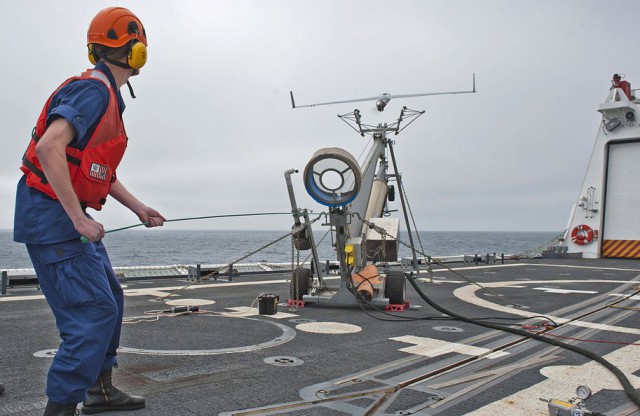The US Coast Guard (USCG) is assessing and evaluating a payload on its fleet of Insitu ScanEagle tactical unmanned aerial systems (UASs) that takes photos of the ocean surface, checks for anomalies, and alerts the aircraft’s operator for further investigation, according to a key official.
Commander James O’Mara, USCG cutter Stratton operations officer, told Jane’s in a recent interview that the payload’s programme uses an algorithm to detect the anomaly before sending the operator a message, similar to an email that provides a photo and options for further investigation. The payload is one of three that the USCG is assessing and evaluating as part of a ScanEagle trial period before the coast guard holds a competition to acquire small UAS services for its entire fleet of cutters.
Cmdr O’Mara said the USCG is focusing on visual target detection and cueing for its current mission. He said this incorporates a number of tasks, such as looking at a vessel or target of interest and determining what is on board, how many people or engines, or, perhaps, contraband jettisoned. Cmdr O’Mara said image fidelity is crucial for this mission so the USCG can provide prosecutors with physical evidence for criminal prosecutions.
Unlike his US Air Force (USAF) counterparts, Cmdr O’Mara said the coast guard does not have issues with processing all the data coming in from its UAS. He said this is for two reasons, one being that the USCG is focused solely on visual cueing, for now, and secondly that the coast guard is in the middle of the ocean looking for isolated targets, as opposed to the USAF patrolling data-rich areas like Iraq or Afghanistan.
Source: Jane’s 360

